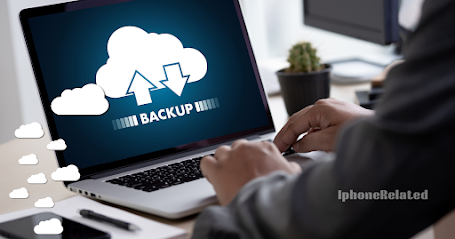Restoring an iPhone from a backup is an essential process for users transitioning to a new device, recovering from a technical issue, or resetting their phone without losing crucial data. Apple offers seamless ways to back up and restore your iPhone using iCloud, iTunes, or Finder on a Mac. Understanding the steps and choosing the appropriate method ensures a smooth recovery of your data. In this guide, we will explore how to restore an iPhone from a backup using multiple approaches.
1. Understanding the Importance of Backups
Backing up your iPhone is the first step toward safeguarding your data. A backup allows you to restore your device to its previous state, including apps, settings, photos, messages, and more.
Restoring from a backup is particularly useful when upgrading to a new iPhone or recovering from a factory reset. Apple’s ecosystem simplifies this process through iCloud and computer-based options, ensuring your data remains secure and accessible. Regular backups are crucial to prevent data loss and make the restoration process hassle-free.
2. Preparing for Restoration
Before restoring your iPhone, ensure you have an available backup. Verify this through your iCloud account or your computer. It’s also wise to check that your device’s software version is compatible with the backup.
Steps to prepare:
- Confirm your iPhone is fully charged or connected to a power source.
- Ensure you have access to a stable Wi-Fi network if using iCloud.
- Double-check your Apple ID credentials, as you’ll need them during the process.
Proper preparation minimizes interruptions during restoration and ensures a successful outcome.
3. Restoring iPhone from iCloud Backup
Restoring from iCloud is the most convenient option, especially when you don’t have access to a computer. This method requires a reliable internet connection and sufficient iCloud storage for your backup.
Steps to restore from iCloud:
- Turn on your iPhone and follow the setup prompts until you reach the Apps & Data screen.
- Select Restore from iCloud Backup.
- Sign in with your Apple ID and choose the desired backup from the list.
- Wait for the restoration to complete; this may take time depending on the size of the backup and your internet speed.
Once finished, your iPhone will reboot with all your data and settings restored.
4. Restoring iPhone Using iTunes (Windows)
For users with a Windows PC, iTunes remains a reliable tool for managing iPhone backups and restoring them when needed.
To restore using iTunes:
- Install the latest version of iTunes on your computer.
- Connect your iPhone using a USB cable.
- Open iTunes and select your device from the top-left corner.
- Click Restore Backup under the Summary tab.
- Choose the backup you want to restore and click Restore.
This method is particularly effective for restoring large backups without relying on internet connectivity.
5. Restoring iPhone Using Finder (macOS Catalina and Later)
If you use a Mac running macOS Catalina or newer, Finder replaces iTunes for managing iPhone backups. This method offers the same functionality with a streamlined interface.
Steps for restoring with Finder:
- Connect your iPhone to your Mac using a Lightning cable.
- Open Finder and select your device under Locations.
- Click Restore Backup in the General tab.
- Choose the desired backup and enter your encryption password if prompted.
- Wait for the process to complete.
Restoring via Finder is a quick and reliable method, ideal for macOS users.
6. Restoring Selected Data
Sometimes, users prefer to restore only specific types of data rather than a full backup. Third-party tools like iMazing or Tenorshare UltData enable selective restoration of photos, messages, or app data.
To restore selected data:
- Install a trusted third-party tool on your computer.
- Connect your iPhone and select the backup file.
- Choose the data categories you want to restore.
- Follow the on-screen instructions to complete the process.
This approach offers flexibility, allowing you to retrieve essential data without overwriting your current settings.
7. Troubleshooting Common Issues
Restoration processes can sometimes encounter challenges. Common issues include incomplete restores, compatibility errors, or missing backups.
Tips to resolve problems:
- Ensure your iPhone has sufficient storage for the backup.
- Update your iPhone to the latest iOS version.
- Verify your internet connection if restoring from iCloud.
- Contact Apple Support if the problem persists.
Being prepared to troubleshoot ensures a smoother experience during restoration.
8. Restoring Without a Backup
If you don’t have a backup, you can still set up your iPhone as a new device. While this won’t recover your previous data, you can sync information from iCloud services like Photos, Contacts, and Notes if enabled.
Steps to set up without a backup:
- Turn on your iPhone and follow the setup prompts.
- Sign in with your Apple ID to sync data from iCloud.
- Manually download apps from the App Store and reconfigure settings.
This option works well for users starting fresh or migrating minimal data.
Conclusion
Restoring an iPhone from a backup is a straightforward yet vital process that ensures your data remains intact. Whether you’re upgrading to a new device, recovering from technical issues, or starting fresh, Apple offers versatile methods to meet your needs. From the simplicity of iCloud to the reliability of computer-based solutions, each approach caters to different scenarios.
By following the steps outlined in this guide and preparing adequately, you can restore your iPhone seamlessly and resume your digital activities with ease. Remember to regularly back up your data to prevent unexpected losses and make future restorations effortless.

0 Comments